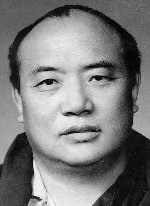![[Main ROKPA Homepage]](images/anilonew.gif)





![]()
![]()
![]()
![]()
HH the 16th Gyalwa Karmapa,
Rangjung Rikpé
Dorjé
Rangjung Rikpé Dorjé
The following is a personal
appreciation of HH the 16th Gyalwa Karmapa, by Ken Holmes,
from his book "Karmapa", published by Altea
PART THREE:
From Tibet to Sikkim

|
 |
The next few years were to prove critical. His Holiness
recognised several important new reincarnations, including Gyaltsab
Rinpoche, Palpung Jamgon Kongtrul and Drongsar Chentse, and Tsurphu
became the refuge of Kagyu tulkus fleeing the violence that had again
erupted in eastern Tibet. These included Palpung's great yogi, Kalu
Rinpoche and the young Tai Situ, Tralek and Sangye Nyenpa tulkus. These
young reincarnations were to be the future heart of the Kagyu lineage
and His Holiness nurtured them with great care. Some he sent to safety
fairly early on, such as the Tai Situpa and Sangye Nyenpa, who were
accompanied by Kalu Rinpoche to Bhutan. Foreseeing the inevitable horrors
that were to happen to Buddhism in Tibet, the Sixteenth Karmapa informed
the Dalai Lama, in the spring of 1959, of his intention of leaving his
homeland in order to preserve the greatest "wealths" of his lineage:
the clear young minds of its incarnate lamas and the spiritual treasures
and relics that were portable. He led a party of some 150 tulkus, monks
and lay people on a relatively easy journey to Bhutan. It took three
weeks.
It must have been a moving and awe-inspiring journey for his party.
Accompanied by the leader they loved so dearly, they first passed through
the southern area of Lodrak, where Marpa and Milarepa had created the
history of their tradition and where the nine-storey tower, built single-handedly
by Milarepa in back-breaking conditions as a trial of faith in his master,
almost 900 years previously, still stood. When they were approaching
the 6,000 metre pass which is the border between Bhutan and Tibet, most
people wanted to stop and rest, yet His Holiness urged them on, saying
that it was vital to cross that very day. They did so and, that very
night, heavy snows fell blocking off the Chinese pursuers close behind
them. The Karmapa's perspicacity saved them from certain capture, as
they were unaware of being followed. In Bhutan they were warmly received
by the princess, now a nun, and the Tai Situpa and Kalu Rinpoche came
to join the Karmapa.
The Karmapa himself continued on to Sikkim, where he was again warmly
received by the royal family and formally invited to establish his new
seat. Of the several sites proposed, he decided it best to settle at
Rumtek—the monastery
built by the ninth Karmapa but now almost in ruins. He said the prophetic
words that he hoped one day to return to Tibet but that Rumtek could
be his seat out of Tibet. The generosity of the Sikkimese royal family
and, a little later, of the Indian government, following the Karmapa's
meeting with Pandit Nehru, funded most of the construction of the new
Rumtek. The Indian Government donated 1.4 million rupees.
The above is a personal appreciation of HH the 16th Gyalwa Karmapa, by Ken Holmes, from his book "Karmapa", published by Altea
continued ...